Hiking in the Mountains in Winter
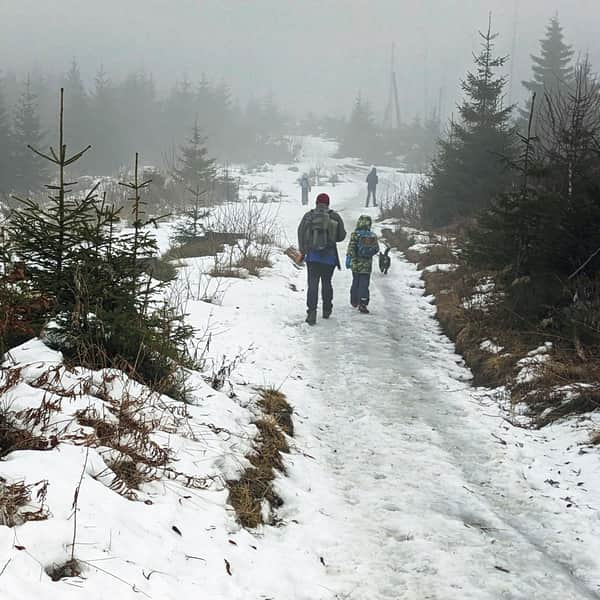
Do you and your family enjoy hiking in the mountains during spring, summer, and autumn, and would you like to try it in winter as well? There are many advantages to hiking in the mountains in winter: less crowded trails, a unique fairytale-like atmosphere, and breathtaking views. It's definitely worth a try!
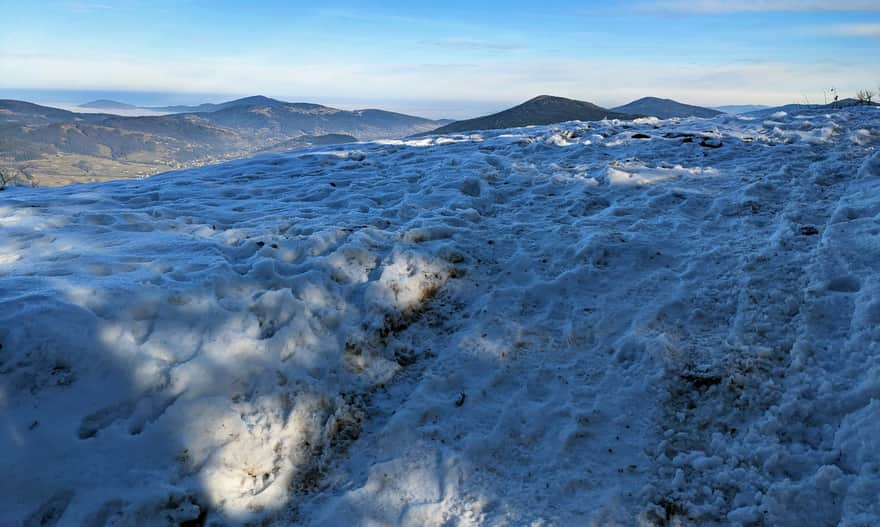
How to prepare for a winter hike in the mountains?
The first thing to consider is the weather. Firstly, how it has been in the days leading up to your hike: has there been fresh snowfall, rain, or a few days of thaw? Secondly, what is the latest weather forecast for the day of your hike. Are the conditions favorable? Now, let's choose a trail!
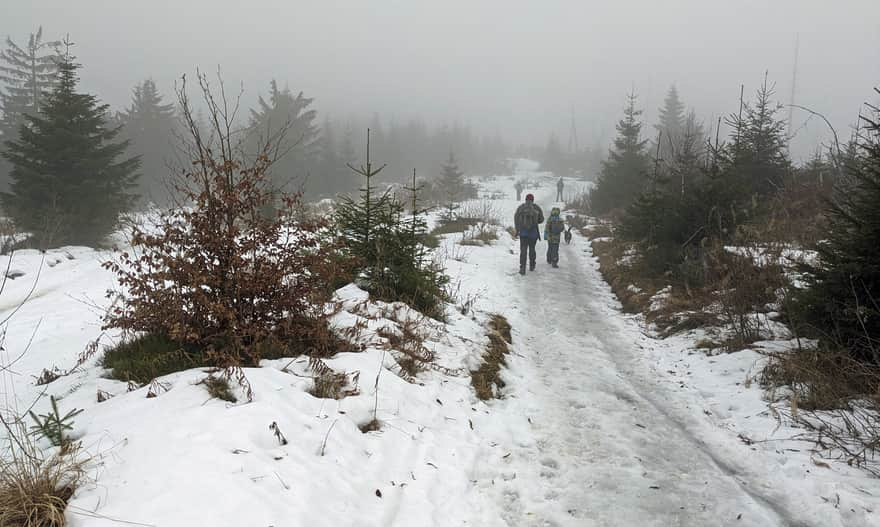
When choosing a trail for a winter hike in the mountains, take into account the following:
- the route and travel time to the trailhead - in winter, the same route may be more challenging to drive than in summer, and some mountain access roads may require tire chains. It's safest to choose larger roads leading to popular and frequently visited trails - they should be passable.
- the length of the trail - due to predictable and unpredictable difficulties along the way, it's advisable to multiply the estimated time on maps by 1.5 as a precaution (e.g., instead of assuming 2 hours, plan for 3 hours).
- difficult sections - if you notice suspicious contour lines on the map, sudden changes in the trail profile, or if the trail description mentions a steep section and you're unsure about your fitness and abilities, it's better to choose a different trail.
- sunset time - don't forget that winter evenings darken quickly! On trails through forests, it will become completely dark very fast.
- a shelter along the way - a shelter is always welcome during winter hikes! Here, you can rest in warmth, sit down, eat without gloves, and use the restroom.
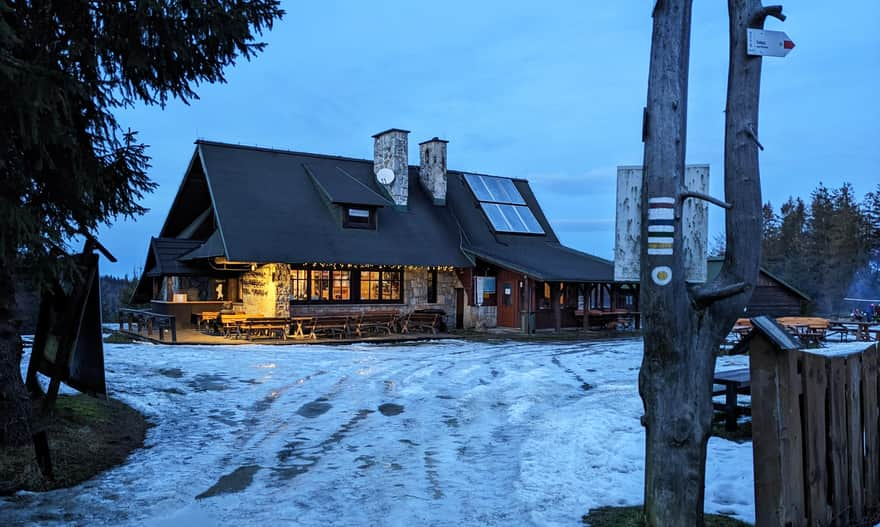
You can find several winter trail suggestions near Krakow here:
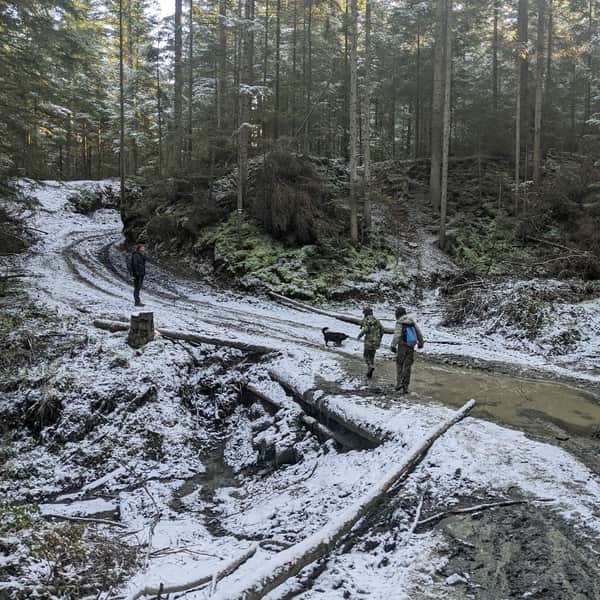
TOP 10 Short mountain trails for winter near Krakow
Short mountain hikes on short winter days? We have a few ideas for you for short routes with good and quick access from Krakow. Perfect for winter family walks! ...
What to wear in the mountains in winter?
Layering is the best approach. It's definitely not recommended to wear thick down jackets that will make you sweat and won't fit in your backpack.
For the base layer, thermal underwear is ideal as it effectively wicks away moisture. For the outer layer, choose a waterproof jacket that provides good protection against wind and moisture. The middle layer depends on weather conditions and personal preferences.
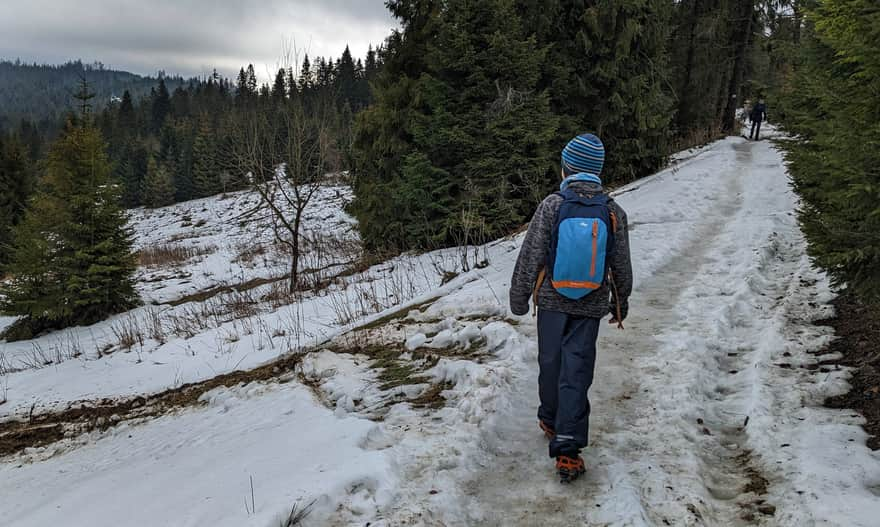
Keep in mind that you will feel warmer when hiking uphill - in such cases, it's advisable to remove a layer and pack it in your backpack (you can put it back on when descending, as the temperature will be completely different). For the same reason, it's good to have a thin hat and a thin neck gaiter - you won't sweat during the ascent, and when descending, you can switch to warmer versions.
What pants to wear in the mountains in winter?
You don't necessarily need thick "ski" pants (unless it's extremely cold). Such pants can be uncomfortable, heavy, and too warm during physical activity. Usually, two layers work best: thin sweatpants or leggings + thin, waterproof, and wind-resistant pants. Some models allow you to remove them without taking off your boots!
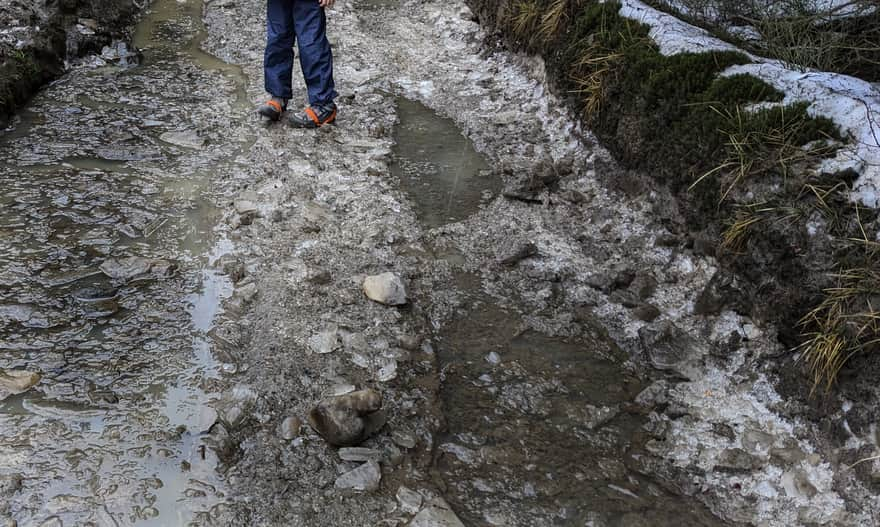
Extra gloves, hat, neck gaiter, socks
Even if you have good waterproof gloves, it's possible that you accidentally drop them in a puddle or stream... In such situations, having a spare pair in your backpack will save the day. An extra hat and neck gaiter will come in handy when the ones you're wearing get wet from falling snow or dense fog. You won't need to change socks during the hike, but they may be useful after reaching a shelter or returning to your car.
Essential equipment for a winter mountain hike
When we think about typical winter equipment for mountain hikes, we often imagine climbers with crampons, goggles, and ice axes. But do we really need all of that?
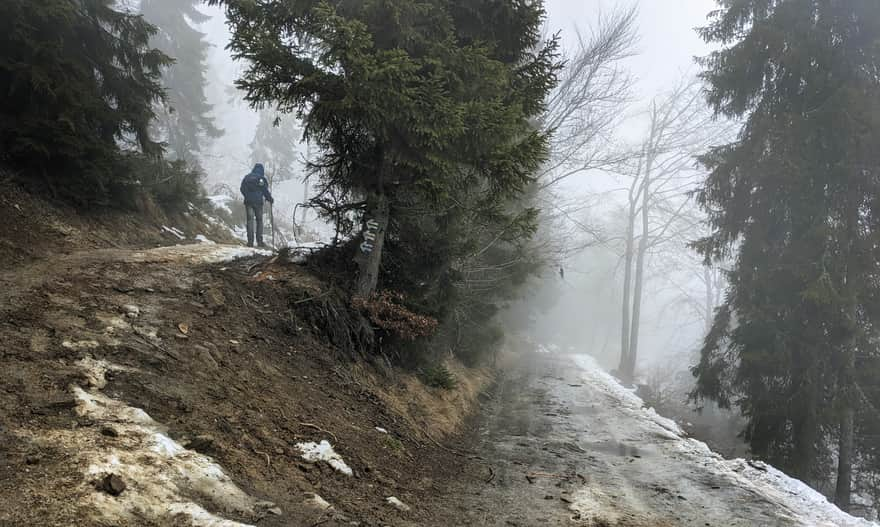
Crampons or traction devices?
If you're planning to go to the Tatra Mountains, crampons are a must! However, if you're heading to the gentle trails of the Beskids, amateur traction devices (which are more comfortable and cheaper) will suffice.
Protecting your boots from getting wet
Wet boots are unpleasant, especially in winter. It's important to choose reliable boots, treat them with waterproofing spray before the trip, and it's even better to have gaiters as well.
What are gaiters, when should you wear them, and how?
Additional waterproof leg coverings will protect the lower part of your pants and the upper part of your boots from getting wet, as well as from dirt, mud, and damage
Trekking poles
Trekking poles are not mandatory but can make it easier to navigate mountain trails, especially during ascents and descents on steep paths (by relieving pressure on the knees). In winter, trekking poles can also help you move on slippery terrain or deep snow.
What else to bring for a winter hike in the mountains?
Apart from appropriate clothing and typical winter equipment, you will also need the following during a winter mountain hike:
- power bank - in lower temperatures, phone batteries drain faster, and having an active phone is not only useful for electronic maps or taking photos but primarily for calling for help in difficult situations.
- warm drink in a thermos - even if you plan to take a break at a shelter, it's worth having your own hot tea, juice, or water.
- chocolate or energy bar that can quickly provide energy on the trail without the need for a long stop.
- hand warmers - small, lightweight, and effective at warming up frozen fingers.
- flashlight - preferably a headlamp - it will come in handy not only when it gets dark but also in foggy conditions or during a snowy blizzard.
- as always, regardless of the season: basic first aid kit, a paper map (preferably laminated), phone, and necessary documents.
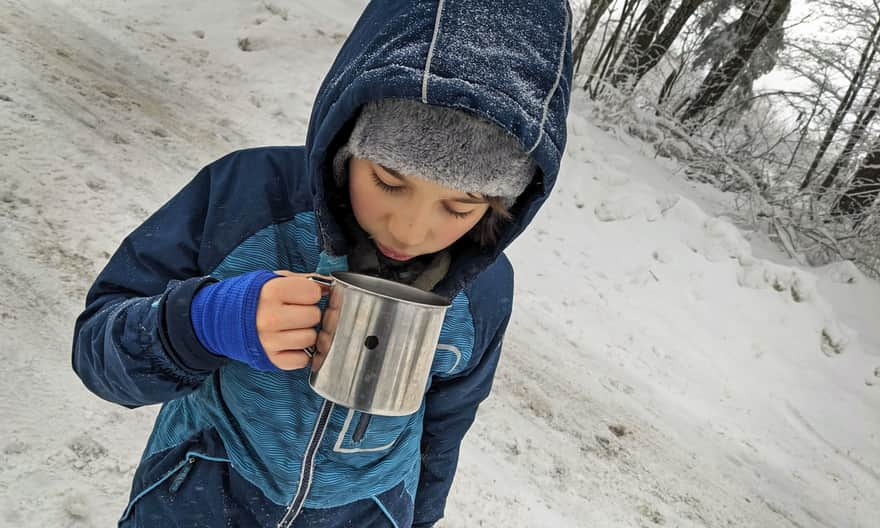
Publish Date:
Last Updated:


